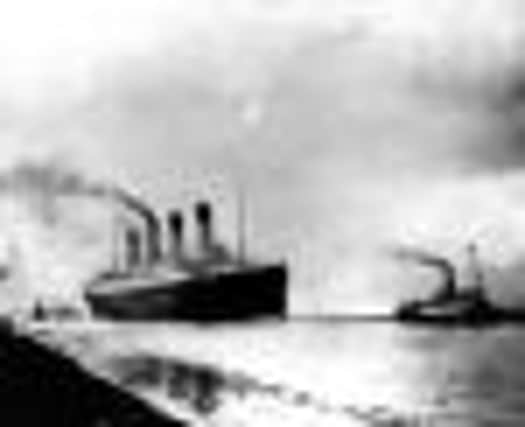Titanic’s ‘poor build quality’ blamed for sinking


Second-rate rivets that held the hull together were to blame for sending the legendary ship to the bottom of the Atlantic 100 years ago next month.
The steel and wrought-iron fasteners used to hold the metal plates together were not of consistent quality and had been inserted unevenly.
Advertisement
Hide AdAdvertisement
Hide AdA review of existing evidence published in Physics World says this meant the part of the hull that hit the iceberg was much weaker than the main body of the huge vessel.
Combined with the unusual climactic conditions that caused the iceberg to be lying in wait for the Titanic, there was “a perfect storm of circumstances that conspired to her doom”.
Science writer Dr Richard Corfield has analysed the maths and physics in the cascade of events that led to the demise of the “unsinkable” ship.
At 11:40pm on Sunday, 14 April, 1912, the Titanic, bound from Southampton to New York, struck an iceberg just off the coast of Newfoundland and became fully submerged within three hours.
Dr Corfield, an Oxford-based author, said: “If she had stayed afloat longer, then rescue ships could have got to her and the tragic loss of life mitigated or averted. This is the real question of the Titanic mystery: how could a 46,000-tonne ship sink so quickly?
“The answer is to be found within the science of the Titanic’s construction and the events that occurred on that fateful voyage.”
For decades, Titanic enthusiasts have speculated about what caused the ship to sink on its maiden voyage, with the loss of 1,635 passengers and crew.
A faulty rudder, poor communications on board the liner, the course taken by Captain Edward Smith, the lack of lifeboats, the absence of binoculars in the crow’s nest and the shortcomings of the radio operator have all been put forward as explanations.
Advertisement
Hide AdAdvertisement
Hide AdBut Dr Corfield highlights the work of US researchers Tim Foecke and Jennifer Hooper McCarty, who combined their own analysis with historical records from the shipyard in Belfast where the Titanic was built.
The metal experts contend the vessel’s manufacturer, Harland and Wolff, was under great pressure to secure enough iron to make the required three million rivets to stitch the ship’s metal plates.
In the rush to beat competition from Cunard, the White Star liner was supplied with a vessel that was made using substandard materials.
McCarty and Foecke tested 48 rivets recovered from the wreck and found they had high levels of slag, a result of smelting that can make the iron brittle.
If put under intense pressure, the rivets made from it would have been liable to splinter.